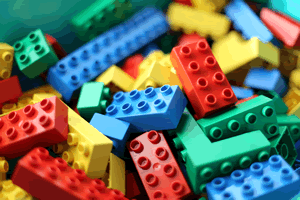 We all know that LEGO® bricks are fun. But it turns out that those little blocks are also powerful educational tools allowing us to test our capabilities and stimulate children’s learning abilities.
We all know that LEGO® bricks are fun. But it turns out that those little blocks are also powerful educational tools allowing us to test our capabilities and stimulate children’s learning abilities.
True to its name, Lego” after the Danish phrase leg godt, or “play well” unlocks learning and development benefits that last a lifetime. The brightly colored pieces and easily interlocking combinations allow for an astonishing range of creative play opportunities and provide hours of patterning practice and fine-motor development.
This “hands on” learning tool deepens our engagement and understanding significantly, strengthening the most important pathways our brains use to learn and develop. Childhood presents a critical window of opportunity.
In an increasingly complex, demanding and competitive 21st century, children need to learn more than the 3R’s they are tested on in school. It’s time to help them go “above & beyond”, by embracing the 4Cs – collaboration, communication, critical thinking and creativity, or, SUPER SKILLS.
For over 30 years, LEGO Education has been an innovator in the education field, offering products and curriculum material that draw in students in a way that few other teaching tools can and an innate ability to effectively fuse the three R’s and four C’s.
So what are the 4 C’s and why are they important!
Collaboration
Generally, collaboration has been accepted as a skill that’s essential to achieve meaningful and effective results. In the past decade, however, it has become increasingly clear that collaboration is not only important but necessary for students and employees, due to globalization and the rise of technology.
Sites like Wikipedia highlight how interconnected our world has become and emphasizes the benefits of collaborative work. The resulting products are those to which millions of users have contributed.
Communication
Students must be able to effectively analyse and process the overwhelming amount of communication in their lives today. Which information sources are accurate? Which ones are not? How can they be used or leveraged effectively?
In addition, there are now “global teams” that work together in business. Linguistically and culturally effective communication is essential to contribute successfully to these teams. And as technology gives rise to global work teams that span time zones, nations, and cultures, it is imperative that tomorrow’s graduates communicate clearly and effectively in a variety of languages.
Critical Thinking and Problem Solving
The link between critical thinking and education is obvious: one can’t learn well without thinking well. Critical thinking contributes to career success, but also to success in higher education.
Learning critical thinking leads students to develop other skills, such as a higher level of concentration, deeper analytical abilities, and improved thought processing. They must be active critical thinkers if they are to compare evidence, evaluate competing claims, and make sensible decisions.
The solutions to international problems, such as global warming, require highly developed critical thinking and problem-solving abilities. In everyday work, employees must employ critical thinking to better serve customers, develop better products, and continuously improve themselves within an ever-changing global economy.
Creativity and Innovation
If students leave school without knowing how to continuously create and innovate, they will be underprepared for the challenges of society and the workforce. Act on creative ideas to make a tangible and useful contribution to the field in which the innovation will occur.
Creativity is more than just artistic talent. It is a different way of thinking. In his globally famous TED talk ‘How Schools Kill Creativity’ (February 2006) Sir Ken Robinson PHD defined creativity as the process of having original ideas that have value.
“Creativity is one of the crucial 21st century skills we’ll need to solve today’s pressing problems. I work a lot with Fortune 500 companies, and they’re always saying, we need people who can be innovative, who can think differently. Our world is changing so rapidly, it is estimated Sixty-five percent of today’s children will end up in jobs that haven’t been invented yet”. Mr Robinson said.
He further explained, “Education is becoming so dominated by this culture of standardized testing, by a particular view of intelligence and a narrow curriculum and education system, that we’re flattening and stifling some of the basic skills and processes that creative achievement depends on.”
According to Tony Wagner, Expert in Residence at Harvard University’s new Innovation Lab, the way to develop young people to become innovators… is, in a word, play. “Research shows that human beings are born with an innate desire to explore, experiment, and imagine new possibilities – to innovate.
Ends
For more information or high-res images please contact Julie Lang at jlang@bricks4kidz.com or 0411 369 444


